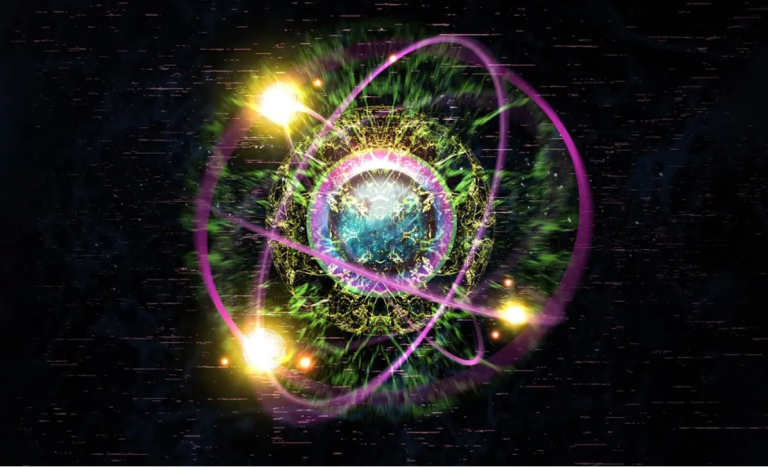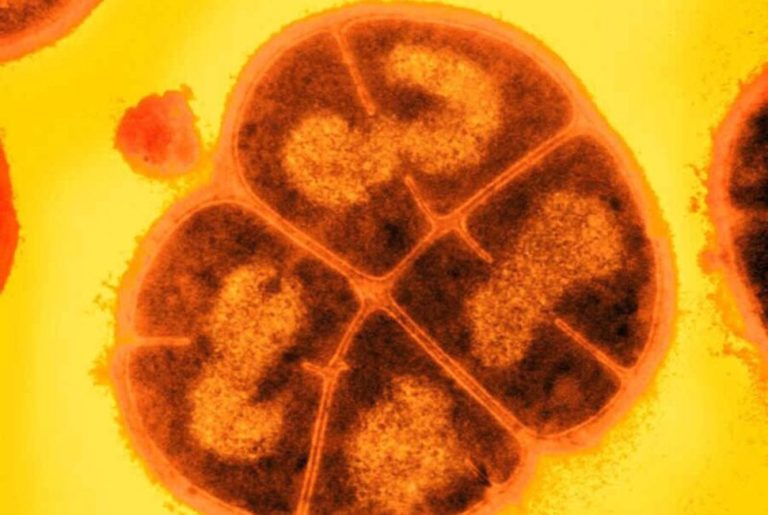Transforming the Red Planet: The Role of Asteroid Strikes in Mars Terraforming
Terraforming Mars is a bold idea that explores how we might use asteroid impacts to change the Red Planet’s thin, cold atmosphere into one that can support human life. By harnessing the natural resources of asteroids, particularly those from the Kuiper Belt, engineers and scientists are studying ways to warm Mars and boost its atmospheric pressure without relying solely on enormous, impractical quantities of material.
Summary
- Concept Overview: The article explains the idea of terraforming Mars by using asteroid strikes to boost the planet’s atmosphere.
- Scientific Background: It covers the physics behind Mars’ current atmosphere, why water boils at low pressure, and the challenges of achieving Earth-like conditions.
- Asteroid Resource Utilization: Focuses on using asteroids, especially from the Kuiper Belt, as a resource for adding necessary gases.
- Technological Hurdles: Discusses the need for advanced propulsion systems, such as fusion reactors with ion engines, to guide asteroids safely.
- Research Foundations: References studies such as L. Czechowski – Energy problems of terraforming Mars and articles from Universe Today and others.
- Energetic Considerations: Reviews the immense energy requirements needed to change Mars’ atmospheric conditions.
- Impact Dynamics: Explains how asteroid impacts would release energy and material to create a warming effect.
- Future Possibilities: Highlights that while the plan is ambitious, continued research and technological innovation could make Mars colonization more realistic in the future.
- Scientific Debate: Mentions ongoing discussions about alternative methods like bioengineering and artificial magnetospheres.
- Human Imagination: Emphasizes how these ideas, while currently theoretical, fuel the dreams of future Mars explorers.
- Real-World Examples: Discusses places on Mars such as Hellas Planitia, where conditions are slightly more favorable.
- Visual Data: Includes tables that detail terraforming challenges and asteroid characteristics.
- Quotable Insight: Presents key expert quotes to underscore the importance of energy and planning in terraforming.
- Educational Value: Provides readers with simple language explanations and clear organization for better understanding.
- References and Further Reading: Offers hyperlinks to various studies and articles for those interested in more details.
- Forward-Looking Vision: Concludes with optimism about the future of Mars terraforming through innovative ideas.
Introduction
Terraforming Mars has been a dream of space enthusiasts and scientists for many years. The idea is to change the environment of the Red Planet so that it can support human life. Mars today is very different from Earth; its atmosphere is thin, cold, and lacks the pressure needed to keep water in a liquid state.
The Science Behind Mars’ Atmosphere
Mars has a very weak atmosphere, with pressure levels far below those on Earth. In simple terms, this means that if you were to expose water to the Martian environment, it would boil away almost instantly. This phenomenon occurs because the atmospheric pressure on Mars is insufficient to keep water in its liquid form. As a result, any human on Mars would need to wear a pressure suit to survive.
To reach conditions that could support life, Mars would need to achieve at least 1/10th of Earth’s sea level pressure. Certain regions on Mars, like Hellas Planitia, are slightly better off but are still far from ideal. Scientists have studied the idea of adding more gases to Mars’ atmosphere, but the scale of the project is enormous.
Asteroid Strikes as a Method for Terraforming
One of the most intriguing solutions is to use asteroid strikes. The idea is to deliberately direct icy bodies from the Kuiper Belt or the main asteroid belt to collide with Mars. The energy from these impacts would not only deliver essential gases like water and nitrogen but also release a tremendous amount of heat, potentially warming the planet.
Asteroids from the main belt are closer to Mars, but they lack sufficient water and nitrogen. The Kuiper Belt, in contrast, holds a vast supply of icy bodies rich in these vital elements. However, one challenge is that asteroids from the Kuiper Belt are unpredictable. Bringing them near Mars without causing unwanted fragmentation is a major technical hurdle.
Technological Challenges
The engineering challenges of using asteroid strikes for Mars terraforming are significant. First, the process would require a propulsion system capable of altering the trajectory of large icy bodies. One proposed method involves using fusion reactors to power ion engines. This technology would need to direct the asteroid in such a way that it collides with Mars at the right angle and speed.
Another challenge is ensuring that the collision releases its energy in a controlled manner. Too much force could shatter the asteroid, dispersing its useful material into space rather than adding to Mars’ atmosphere. On the other hand, if the impact is too gentle, the asteroid may simply bounce off or disintegrate before contributing meaningfully.
Table 1: Terraforming Challenges
| Challenge | Description |
|---|---|
| Atmospheric Pressure | Mars’ current pressure is too low to sustain liquid water on its surface. |
| Energy Requirements | Enormous energy is needed to warm the planet and release trapped gases. |
| Propulsion Systems | Advanced propulsion systems are required to direct asteroids accurately. |
| Material Integrity | Asteroids must remain intact to deliver necessary water and gases. |
| Impact Dynamics | Managing the force of impact is crucial for effective energy transfer. |
The Role of Fusion and Ion Engines
Fusion reactors represent a promising energy source for the future. By generating tremendous amounts of energy, fusion could power ion engines designed to maneuver asteroids over long distances. Ion engines use electrically charged particles to create thrust and are known for their high efficiency. In the context of Mars terraforming, these engines could slowly adjust the trajectory of asteroids, guiding them safely toward Mars.
This approach is still theoretical and requires much more research and development. However, advances in fusion technology and ion propulsion could one day make it possible to control asteroid impacts with the precision needed for successful terraforming.
Table 2: Asteroid Characteristics for Terraforming
| Characteristic | Description |
|---|---|
| Water Content | High levels of ice can provide water and increase pressure. |
| Nitrogen Content | Essential for creating a breathable atmosphere. |
| Mass and Size | Must be large enough to deliver significant material but controllable. |
| Structural Integrity | The asteroid must withstand propulsion and impact forces. |
| Trajectory Control | Ability to change orbit using advanced propulsion systems. |
Future Possibilities and Research Directions
There are several methods proposed to terraform Mars, and asteroid strikes are just one of them. Some researchers explore bioengineering methods to gradually change the planet’s ecosystem, while others propose creating an artificial magnetosphere to protect Mars from solar wind. Each method has its own set of advantages and challenges.
Despite the many obstacles, the idea of terraforming Mars captures the imagination of many scientists and enthusiasts. It is a subject that encourages creative thinking and collaboration across disciplines. For more detailed studies and innovative ideas, you can check out resources such as UT – New Study Shows Mars Could be Terraformed Using Resources that are Already There and UT – An Absolutely Bonkers Plan to Give Mars an Artificial Magnetosphere.
Innovative techniques and emerging technologies might eventually lead to a breakthrough. Although we are far from realizing a fully terraformed Mars, the ongoing research and discussions inspire further study and progress in space exploration.
The Impact on Human Future
The dream of a habitable Mars has been a driving force in space exploration. By solving the environmental challenges of Mars, humanity could expand its horizons beyond Earth. The idea of redirecting asteroids to change a planet’s climate is both daring and visionary. It reflects our constant desire to overcome limitations and find new ways to survive and thrive.
Research in this area has important implications beyond Mars. It pushes the boundaries of what is possible in space engineering, energy production, and planetary science. Even if asteroid strikes remain theoretical, the lessons learned from these studies could help us manage Earth’s climate challenges in the future.
The concept of terraforming Mars by using asteroid strikes is an exciting intersection of science fiction and advanced engineering. While the challenges are immense, the potential rewards are equally significant. By tapping into the abundant resources of asteroids, we may someday be able to transform Mars into a world where humans can live comfortably. This process involves not only vast amounts of energy but also the development of precise, innovative technologies.
The ongoing research and discussion about Mars terraforming continue to inspire both scientists and the general public. For further exploration of these ideas, you can watch the insightful videos available at this link and this link, and review detailed research such as L. Czechowski – Energy problems of terraforming Mars. Also, consider reading more at UT – How Do We Terraform Mars?.
The journey toward transforming the Red Planet is long and challenging. Yet, every step forward brings us closer to a future where Mars might not just be a distant dream but a second home for humanity.
Facts
- Mars has the tallest volcano in the solar system, Olympus Mons.
- The planet experiences large dust storms that can cover it completely.
- Scientists continue to find surprising geological features on Mars.
- The idea of terraforming was popularized by science fiction long before scientific proposals.
- Asteroid impacts have played a role in shaping planetary surfaces across the solar system.






